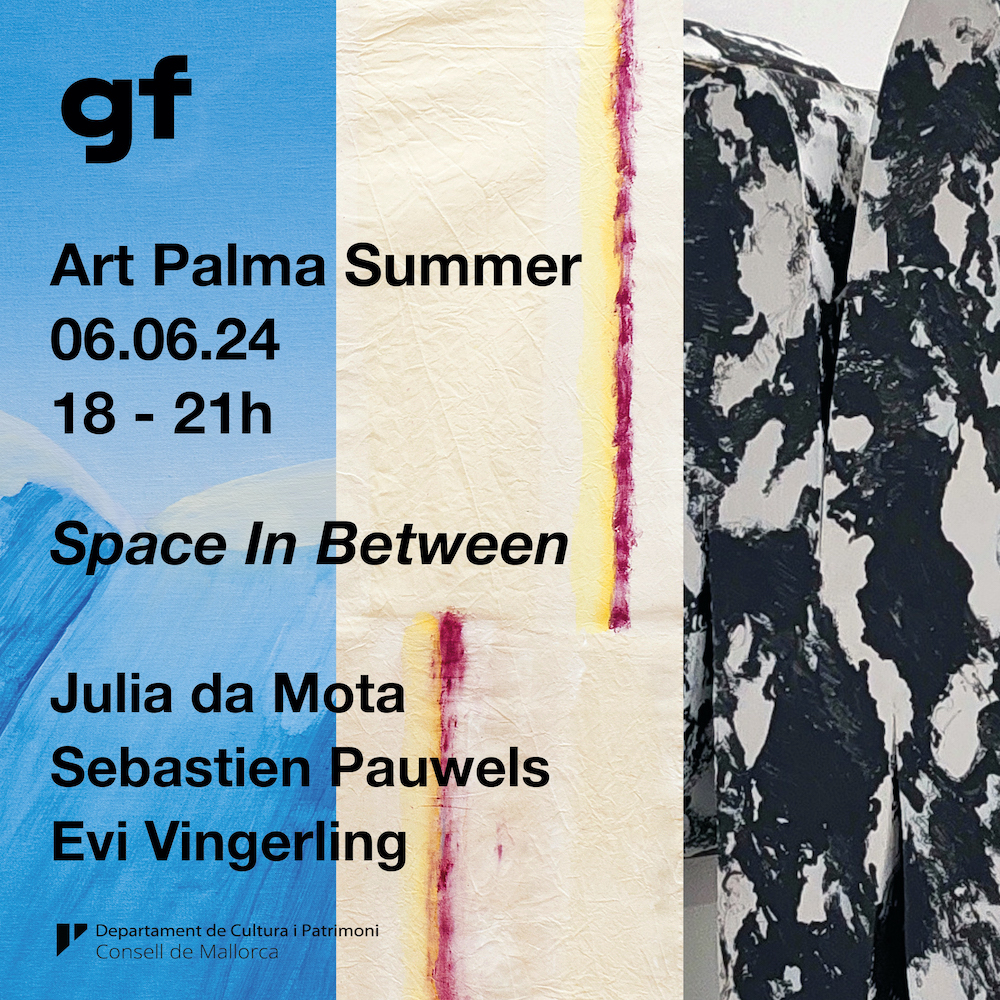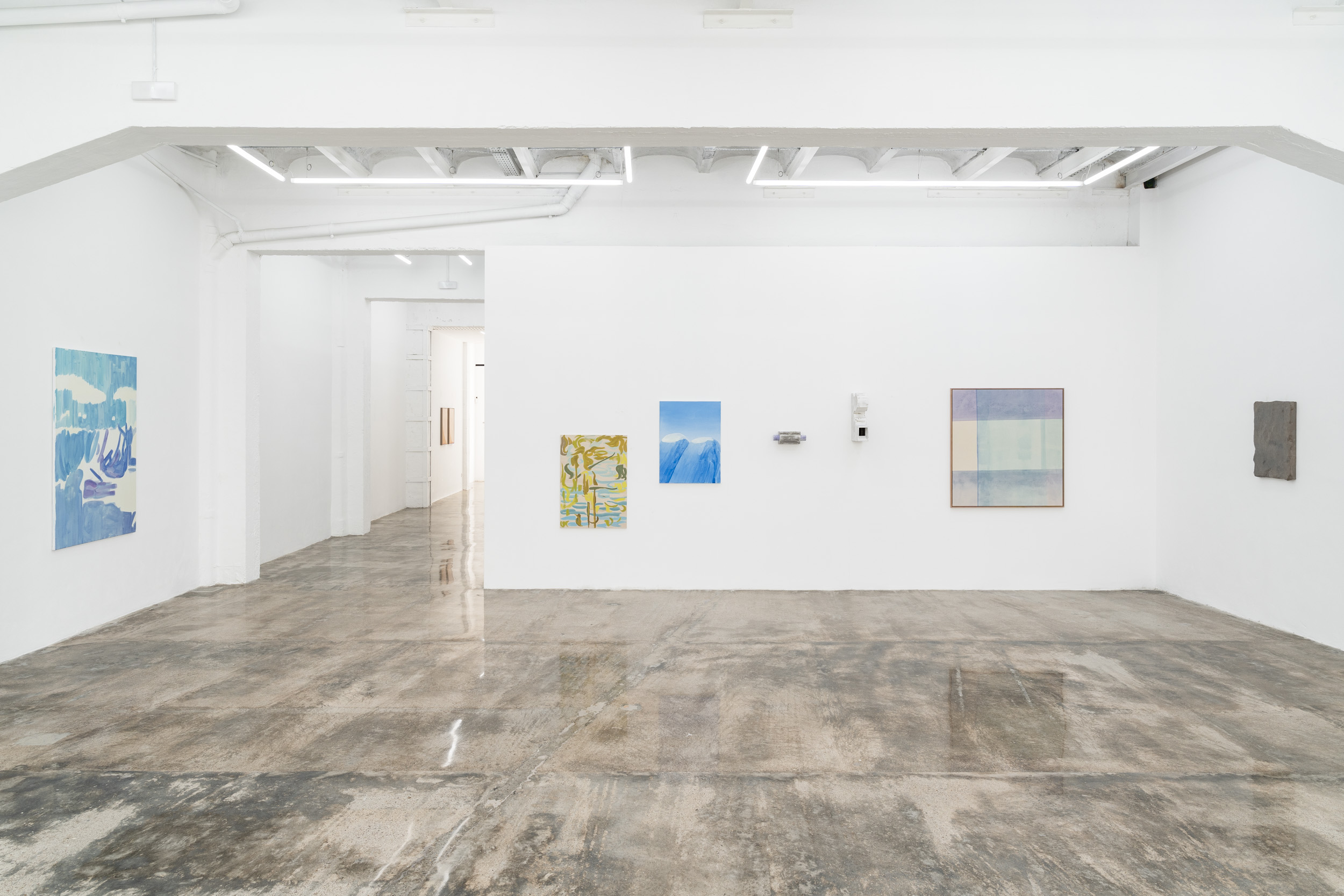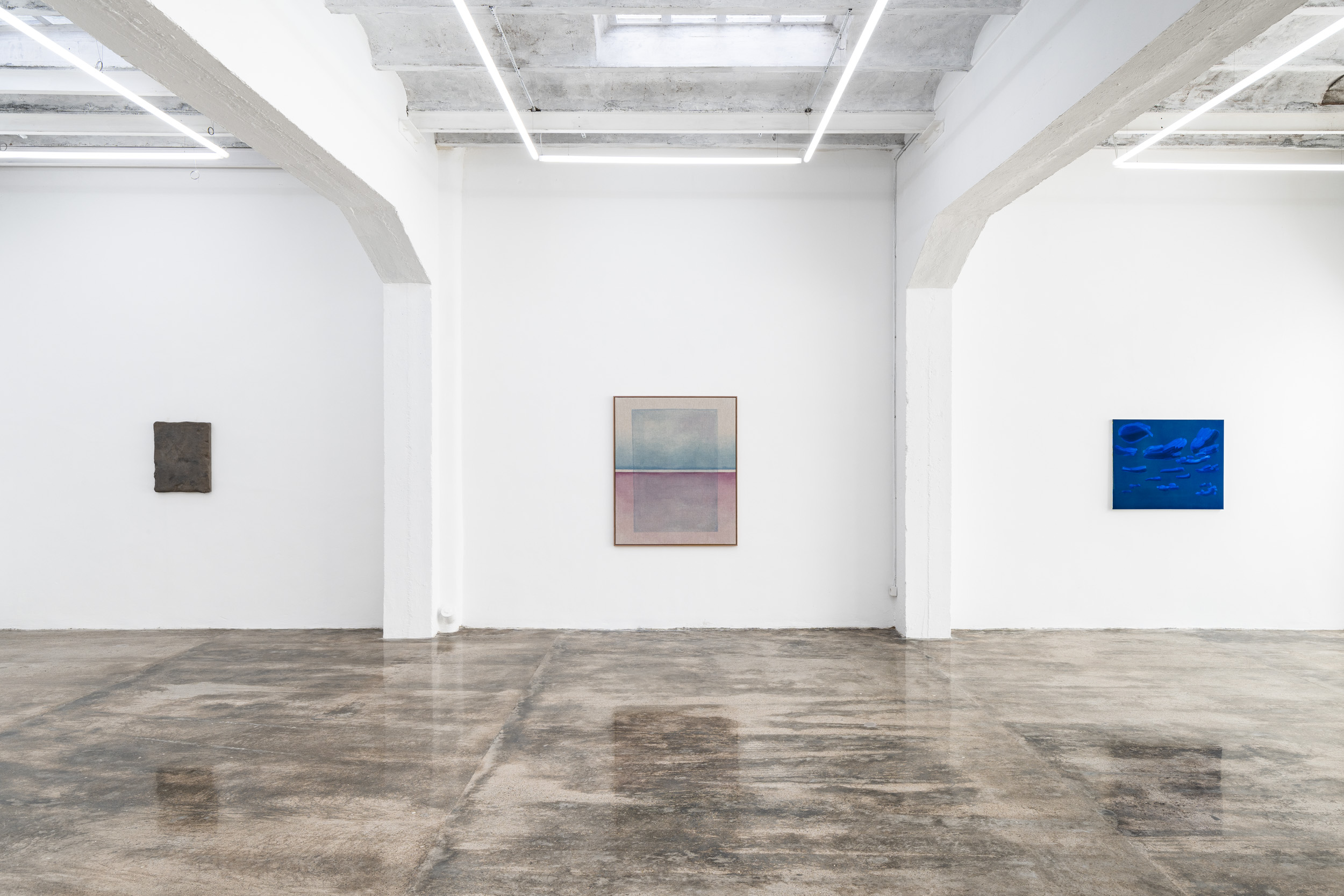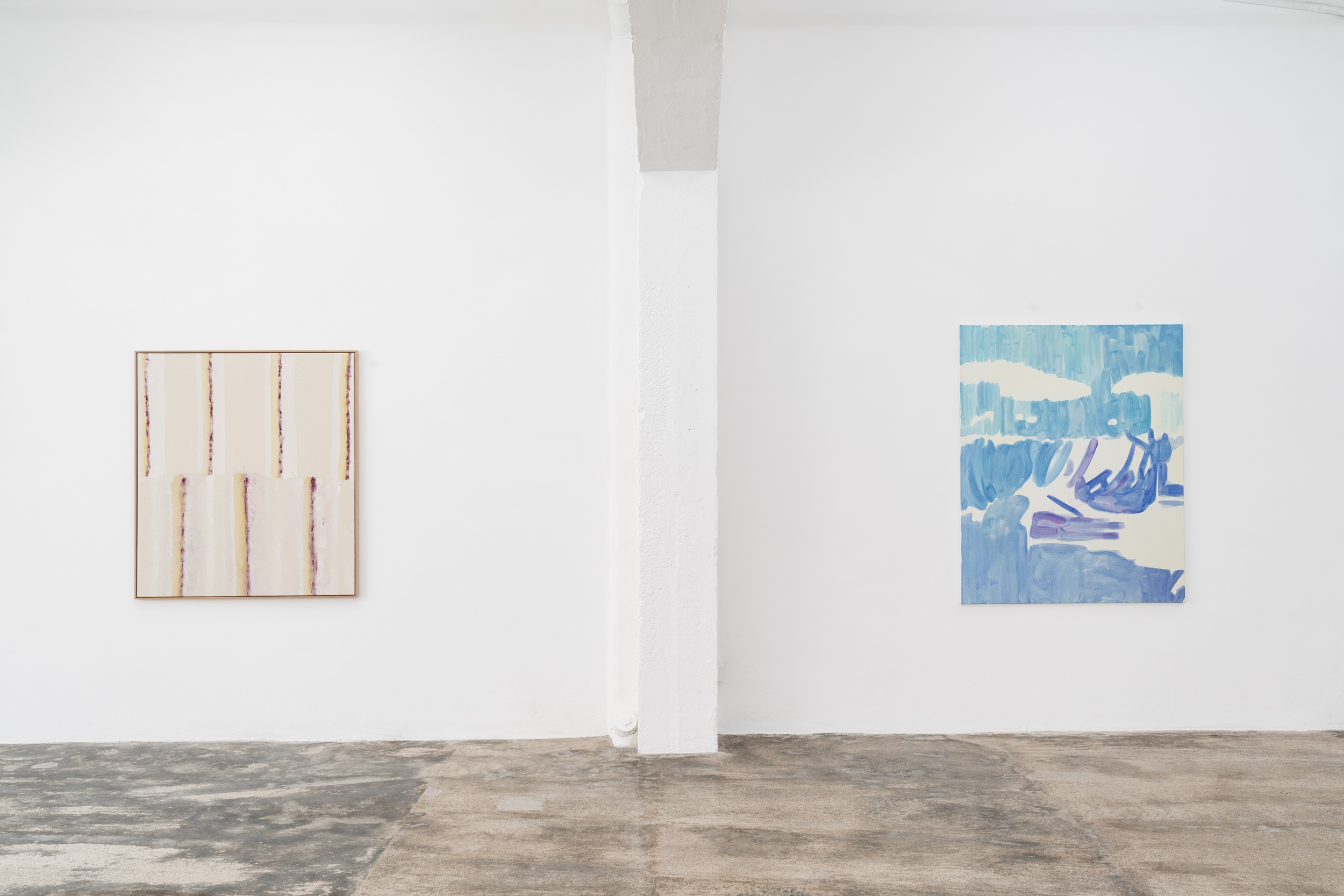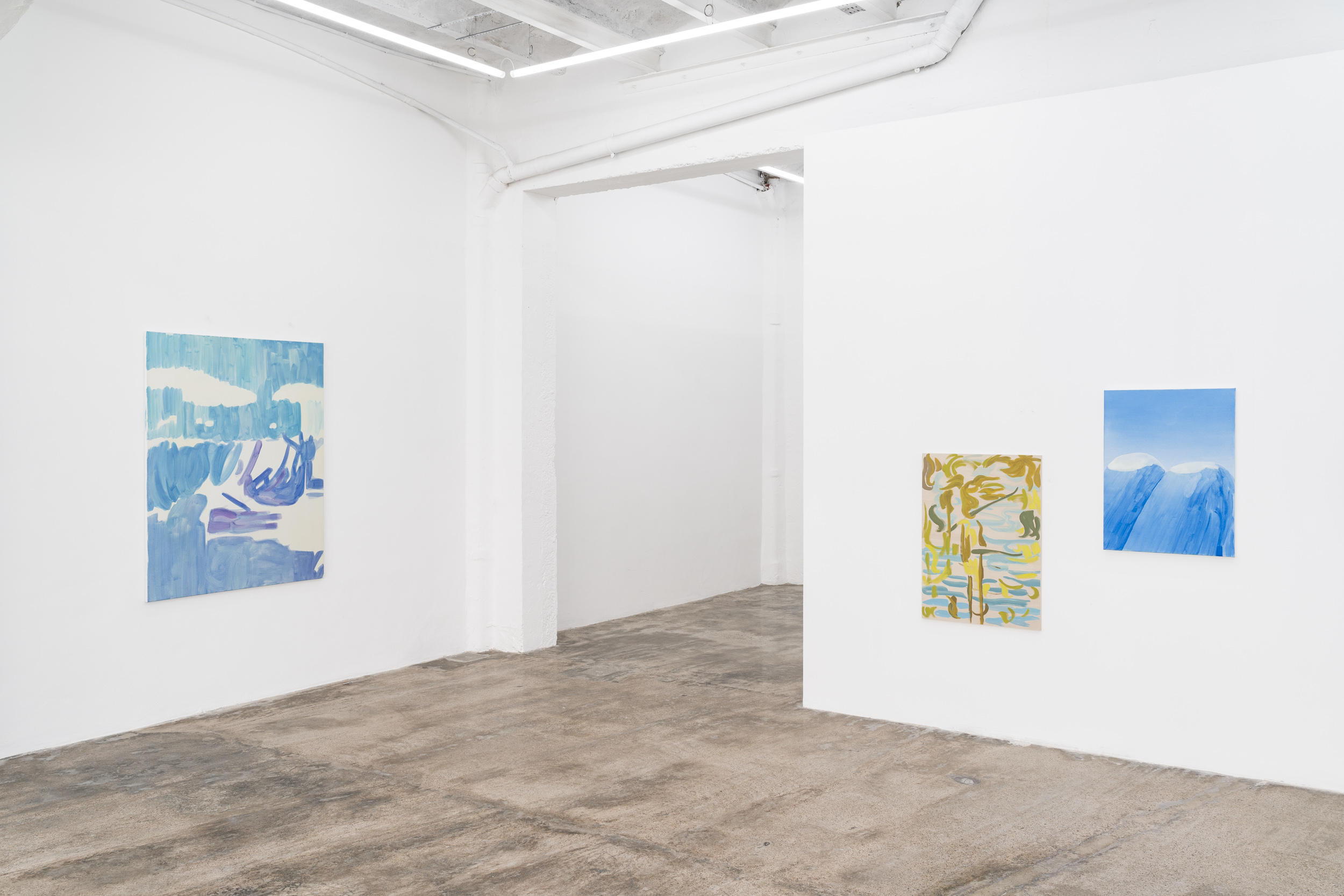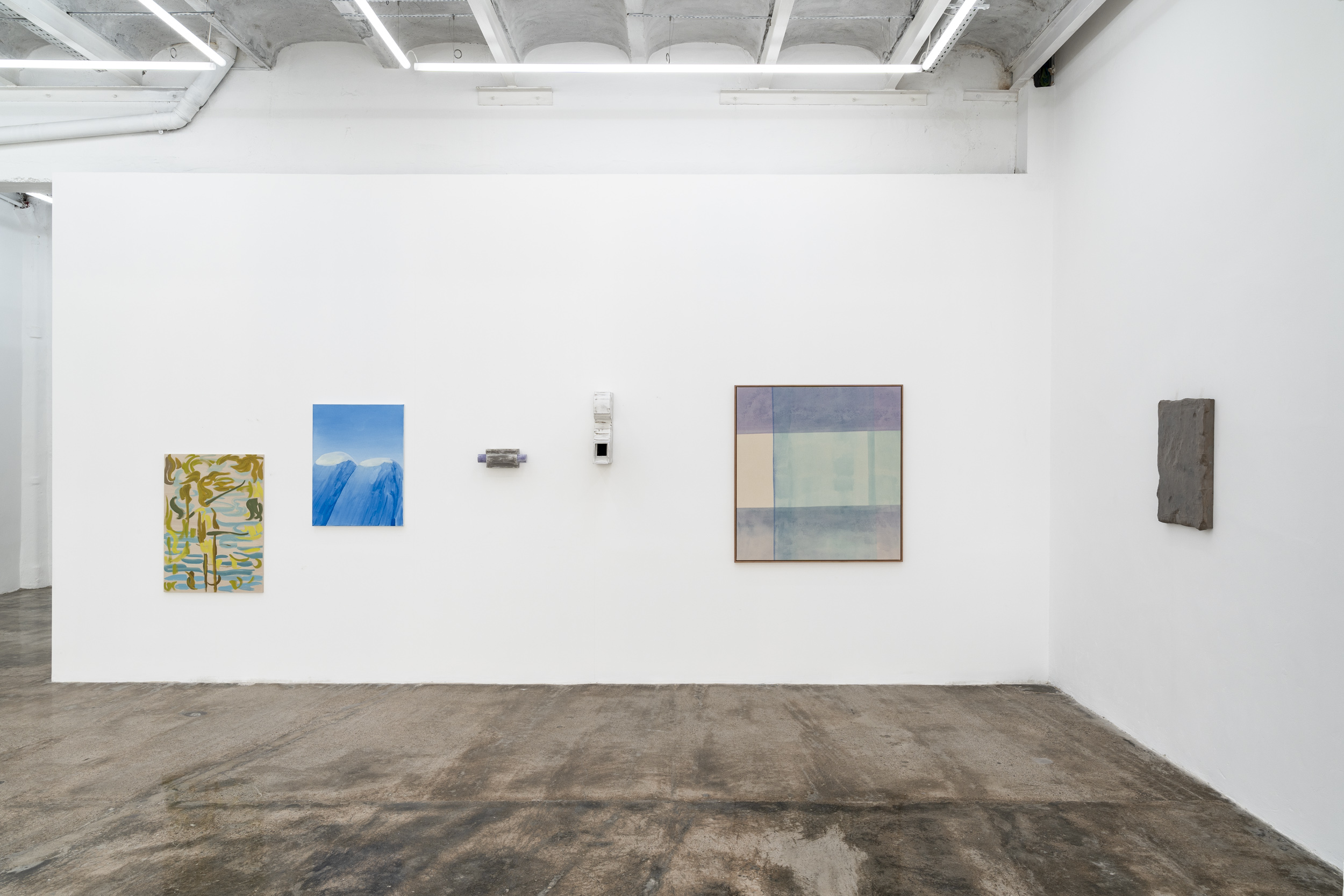Space In Between | Art Palma Summer
06.06 –– 13.09.24
02 - 07. 12. 2025 BAIT AND TACKLE
22.11.2025 –– 20.02.2026 EN FORMA | NIT DE L'ART
20.09 –– 14.11.2025 AÑO TRES | Art Palma Summer
05.06 –– 05.09.2025 Trazos y espacios | Art Palma Brunch
22.03 –– 30.05.2025 ARCOmadrid 2025
05.03 –– 09.03.2025 UNTITLED Art Fair Miami
04.12 –– 08.10.2024 FAIRY TALES
25.11.24 –– 24.01.25 SWAB ART FAIR 2024
03.10 –– 06.10 2024 GALAXY BALLROOM | NIT DE L'ART
21.09 - 15.11.2024 CAN ART FAIR IBIZA
26.06 - 30.06 2024 ARCOmadrid 2024
06.03 –– 10.03.24 ET FUGA | Art Palma Brunch
23.03 –– 31.05.24 MIENTRAS TU SUEÑAS
24.11.2023 –– 02.02.2024 SWAB Art Fair Barcelona (5-8 oct)
THE MELEE | NIT DE L'ART
23.09 ––10.11.2023 MALE MALE
23.06 ––15.09.2023 AMARILLO PÚRPURA - Art Palma Brunch 2023
25.03 –– 26.05 2023 True North
03.02 –– 17.03.2023 TERERÉ
11.11.22 –– 27.01.23 FLOOP
17.09 — 05.11.2022 Here We Go
09.07——02.09.2022
Galería Fermay is pleased to present Space In Between, a group show featuring the works of Julia da Mota, Sebastien Pauwels and Evi Vingerling.
Space In Between brings together three artistic practices whose approach to painting is build upon very specific notions of space. While Pauwels’ artistic practice essentially deals with the idea of constructing painting, Da Mota and Vingerling are concerned with notions such as the body, memory or architecture. Space In Between thinks of painting as a wildly experimental medium open to multiple approaches that not necessarily have to be restricted to the traditional formal categories; instead, we put forward the notion of the painterly which, in our opinion, seems to be a better equipped term to encompass the wide array of practices when it comes to the medium. Here we refer to meaningful and diverse pictorial processes build upon mark after mark that allows for a sort of forward motion where an entanglement of ideas crystallises.
The idea and the representation of space has been fundamental to the development of art since its very beginnings. From cave paintings to gothic altarpieces, gaining a momentum during the Renaissance with the invention of the geometric perspective, there has been so much experimentation around it, specially throughout the 19th and 20th centuries with avant-garde artists who reimagined it all. It is only normal, then, that painting has become a repository of very diverse ideas where artists apply their own logic. More specifically, when we talk about space applied to painting it might indeed refer to many things; from an actual illusory depiction of it, such as in traditional landscape painting, to a deconstructed view of it, as it might happen with a Cubist artwork, or an actual materialisation of it, like in the case of Lucio Fontanas’ Spazialismo, only to mention very few examples. Besides these formal concerns, however, there are also other approaches to space that refer to the realm of emotions, such is the case, for instance, of gesturalism as exemplified throughout the work of Abstract Expressionism, or the subtlety of optical illusions derived from Op Art and Kinetic Art, or the intimacy of the body as in the case of contemporary artists such as Lee Ufan or Juan Uslé. In painterly terms, then, the notion of space is above all an idea, an approach, that adapts to the conceptual strategies put forward by artists.
Julia da Mota develops an intimate body of work that primarily comes from the artist’s relation with her most immediate surroundings. Drawing from the 20th century Western geometric abstract tradition up to the present, the work of Da Mota defies the idea that non-objective art has to be necessarily cold and distant. In her case we find the exact opposite —an eminently formal body of work that primarily arises from the affective. Julia da Mota’s oeuvre results from a paused and reflexive work methodology —the way she marks the unprimed canvas gives prevalence not only to the material qualities of the medium but also to the very act of doing it. In her compositions we see a very clear idea of structure but also an understanding of fluidity that does away with any form of formal rigidity. By making use of heavily diluted pigments, Da Mota is able to control the density of the pictorial matter that slowly penetrates the intricate surface of the canvas thus creating a sense of depth. The interplay of lines, planes and chromatic masses generate a distinctive body of work that, although at first sight might be perceived as soft abstraction, it is actually informed by concrete reality such as the rich Modern Brutalist architecture tradition so characteristic of her hometown of São Paulo in Brazil.
Sebastien Pauwels produces individual sculptures. It is also true, however, that all his pieces belong to a one big family; not only because he is the sole author of them all but because the genesis of each piece very often comes from leftover materials of previous works. This distinctive circular approach to his practice creates a sense of formal cohesion that runs through all his oeuvre. Made out primarily of cardboard, fibreglass and coats of paint, Pauwels’ sculptures usually trick the eye when it comes to the perception of volume. The seemingly flat nature of his sculptures is soon replaced by a three-dimensionality that builds on notions of positive and negative space. Following the trail of eminent artists such as Anne Truitt or Helio Oiticia, Pauwels explores painting as matter. The idea of pulling off painting from the wall, to turn it into an object, and to set colour free for its own sake, is at the core of his artistic practice. His sculptures reveal themselves as complex entities with whom we, the beholders, develop a rather deep and engaging bodily experience —an elaborated intertwining of matter and void, light and shade result in a powerful visual vocabulary that playfully draws from the Ancient to the late Modern abstract tradition.
Evi Vingerling’s body of work stems directly from her experience of the world. A vivid memory or a concrete emotion is usually all that she needs to get on with a new painting. The apparent lightness of Vingerling’s work sharply contrasts with a creative process that sometimes can be quite physically and mentally exhausting. The emotional rush that might accompany the recollection of a certain memory or feeling, is followed by a rather tough process of reduction of form and colour. Fast and agile brushstrokes feverishly swarm the surface of the canvas that, little by little, conform the bare structure of an image that in fact is not intended to be a faithful representation of anything real, but rather, the materialisation of an inner form that in most cases has a direct correlation with her personal experience. As a result, her body plays a central role as a kind of transmisor of the reality she perceives around her. By grounding her work in her innermost self while simultaneously freeing it from any representational burden, Vingerling’s work also achieves a sense of non-specificity and universality that connects with us all. Evi Vingerling skilfully negotiates artistically those little moments that reverberate like distant echoes — her work is vital, dynamic, colourful and expressive that poetically point to the discreet and intimate sphere of her daily life.
Julia da Mota (São Paulo, 1988) lives and works between São Paulo and Paris. She received an MA in Visual Poetics from the University of São Paulo and a B.Arch from the University of São Paulo / ENSA-Paris La Villette. She is currently undertaking a residency programme at Cité internationale des Arts in Paris. In 2021 Julia was also an artist-in-residence at Pivô, one of Brazil’s most prominent non-profit artist residency programs. In 2019 she was a Project Keyholder at East London Printmakers (UK) and in 2018 she was part of LAMB Projects’ Billingbear Farm Residency in Berkshire (UK). She has widely shown her work in exhibitions in São Paulo (BR), Ribeirão Preto (BR), Belo Horizonte (BR), Blumenau (BR), Belém (BR), Palma de Mallorca (SP), London (UK), Alijó (PT) and Chamalières (FR), and has works in collections in Brazil, the United Kingdom, USA, Argentina, Australia, Spain, Portugal, and France.
Sebastien Pauwels (Brussels, 1977) studied BA and MA in Fine Arts at E.R.G. in Brussels. Recent solo and duo exhibitions include Off The Wall at Michel Rein gallery, Brussels (2023), Idômes at Esther verhaeghe art concepts, Brussels (2022), Rencontre(s), duo show, Valerie Van Traan Gallery, Antwerp (2021) or Bon pied bon œil, solo exhibition, Liège/ (2021). Group shows include Hard edge, (2022), collective exhibition, Circle culture Gallery, Hamburg (2023), But dearer still is truth, collective exhibition, Plato Gallery, Evora (2023), Here we go, collective exhibition, Galeria fermay, Palma (2022), Small sculptures, collective exhibition, Michel rein Gallery, Brussels (2021) among many others. His work is part of private collections in Belgium, France, Germany, Switzerland, Portugal including Belgian BMW art collection.
Evi Vingerling was born in 1979, in Gouda (NL). She lives and works in Amsterdam. Vingerling graduated from the Koninklijke Academie van Beeldende Kunsten in The Hague in 2002. From 2005 to 2007 she was a resident at the Rijksakademie van Beeldende Kunsten in Amsterdam, and in 2011 she was invited for a residency at Wiels in Brussels. She has been granted the Royal Award for Painting in 2012. Vingerling has exhibited within the Netherlands and abroad, and her work is represented internationally in both private and museum collections.Her work has been showed at: tegenboschvanvreden, Amsterdam (2024, 2021, NL) Galería Fermay (2022, SP); Kristof De Clercq Gallery, Ghent (2019, 2017, BE); Villa Valero, Rivarolo Canavese (2018, IT); Marres, Maastricht (2017, NL); Stedelijk Museum, Amsterdam (2015, NL); Bonnefanten Museum, Maastricht (2014, NL); Museum Dhondt- Dhaenens, Deurle (2014, BE); Wiels, Brussels (2013, BE); TAC – Temporary Art Center, Eindhoven (2012, NL); Schunck Heerlen and Stedelijk Museum Amsterdam, the Netherlands (2015); Stedelijk Museum ’s-Hertogenbosch, ’s-Hertogenbosch (2011, NL)
